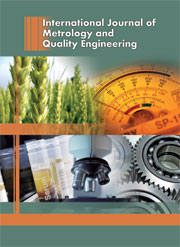No CrossRef data available.
Article contents
Computer aided techniques for estimation and reduction ofelectromagnetic measurement devices uncertainties
Published online by Cambridge University Press: 17 December 2010
Abstract
At non-linear electromagnetic measurement systems, the finite element method is the mostconvenient tool for the system analysis and measurement uncertainties budget estimation.Two non-linear devices will be analyzed by finite element method: electrical steel sheettesting device-Epstein frame and combined current-voltage instrument transformer. TheEpstein frame must comply with the standard IEC 60404-2:1996+A1:2008, and the combinedinstrument transformer with the IEC 60044-3: 2002. The Epstein frame forms an unloadedtransformer and the analytical transformer theory introduces some approximations. The mainapproximation is introduced by the standard IEC 60404-2 (through the presumption ofconstant, invariant to the specimen grade effective magnetic path length). The finiteelement method results will enable an Epstein frame and combined current-voltageinstrument transformer prototype design (by using a computer program based on geneticalgorithm with minimal uncertainty budget as goal function) with reduced measurementuncertainty, which will be experimentally verified in the Metrological Laboratory forElectromagnetic Quantities at the Faculty of Electrical Engineering and InformationTechnologies-Skopje.
Keywords
- Type
- Research Article
- Information
- International Journal of Metrology and Quality Engineering , Volume 1 , Issue 2 , 2010 , pp. 89 - 97
- Copyright
- © EDP Sciences 2010


